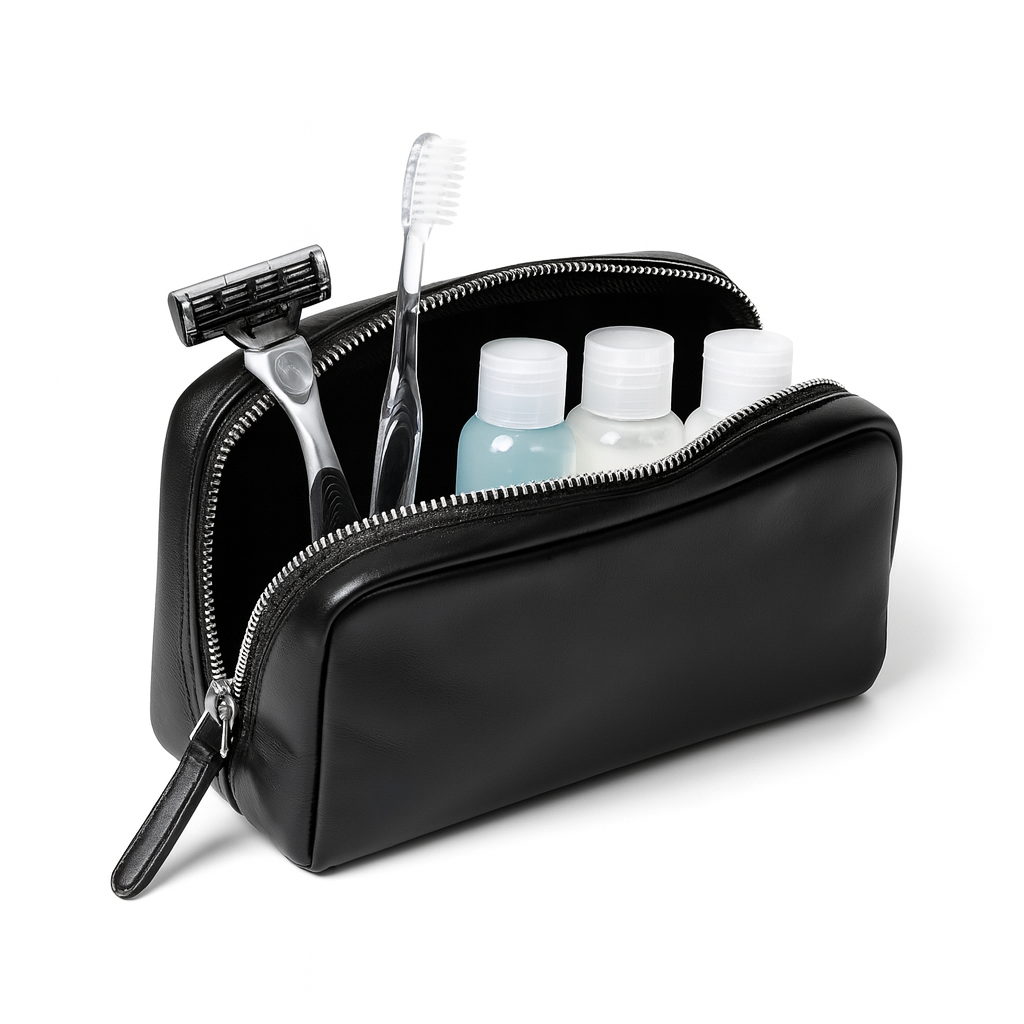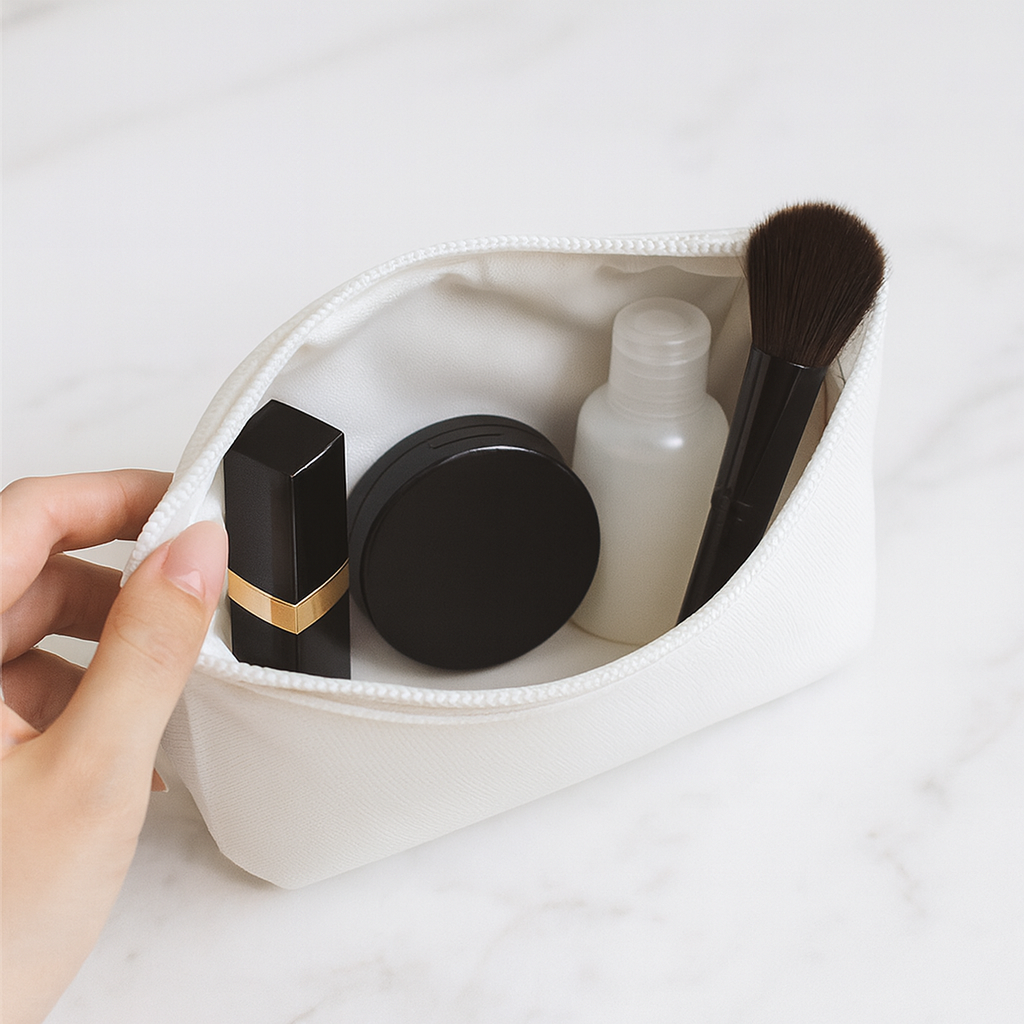Post Code:511400
Email:sales@blaccessory.com
whatsApp:+86 18028696007
Beauty shoppers often buy the wrong storage solution because they confuse makeup bags with toiletry bags, resulting in poor organization and daily frustration. This product confusion leads to purchasing decisions that don’t match actual storage needs and usage requirements.
Makeup bags focus on cosmetic organization with compartments for beauty products and application tools, while toiletry bags emphasize hygiene storage with waterproof features for bathroom essentials. Each serves different purposes despite some overlapping functionality in modern usage scenarios.
#makeup bag vs toiletry bag comparison
I learned these distinctions through customer feedback showing how wrong bag selection creates daily inconveniences and product damage. Understanding these differences helps buyers choose appropriate storage solutions that match their specific needs and usage patterns rather than assumptions.
Makeup bags and toiletry bags serve fundamentally different organizational needs despite some overlapping functionality in modern beauty routines. These product categories evolved from distinct usage requirements that continue influencing design priorities and feature emphasis.
Makeup bags prioritize cosmetic organization with compartments designed for beauty products and application tools, while toiletry bags focus on hygiene storage with waterproof construction for bathroom essentials. Different design priorities create distinct functionality despite some shared usage scenarios.
#makeup vs toiletry bag internal organization
Makeup bags developed specifically to organize decorative cosmetics including foundations, lipsticks, eyeshadows, brushes, and application tools used for beauty enhancement and daily makeup routines. These bags prioritize visibility, easy access, and protection for delicate cosmetic products that require careful handling and organization. Internal compartments accommodate various product sizes while preventing damage and contamination between different cosmetic items.
Design features in makeup bags emphasize cosmetic-specific needs including brush holders, mirror placement, palette compartments, and easy-access pockets for frequently used items. Organizational priorities focus on application efficiency with logical grouping of related products and tools. Visual organization helps users locate specific items quickly during time-sensitive morning routines or touch-up applications throughout the day.
Toiletry bags evolved from travel and hygiene needs requiring waterproof storage for bathroom essentials including toothbrushes, toothpaste, shampoo, soap, razors, and personal care items. These bags prioritize leak protection, easy cleaning, and durability for wet bathroom environments. Waterproof linings and sealed compartments prevent liquid damage while accommodating various hygiene product sizes and shapes.
Construction differences reflect distinct usage environments with makeup bags optimizing for bedroom or vanity use while toiletry bags accommodate bathroom conditions including moisture, humidity, and potential splashing. Material selection prioritizes appropriate durability and maintenance requirements for each environment. Toiletry bags often feature hook systems for bathroom hanging while makeup bags emphasize countertop stability.
Size variations serve different storage needs with makeup bags typically offering smaller, more specialized compartments for individual cosmetic items while toiletry bags provide larger spaces for full-size hygiene products. Capacity requirements differ based on product types and usage frequencies. Makeup bags accommodate precision products while toiletry bags handle bulk hygiene essentials.
Compartment design reflects product characteristics with makeup bags featuring shallow, visible compartments for easy cosmetic access while toiletry bags include deeper sections for tall bottles and containers. Organization logic differs based on application needs versus storage requirements. Makeup organization prioritizes visual access while toiletry organization emphasizes secure storage.
Travel considerations influence design differently with makeup bags focusing on cosmetic protection during transport while toiletry bags emphasize leak prevention and security screening compliance. TSA requirements affect toiletry bag design through clear compartments and liquid restrictions while makeup bags prioritize product integrity and application readiness. Travel optimization serves different security and functionality needs.
Gender targeting traditionally differs with makeup bags primarily marketed to women while toiletry bags serve broader demographics including men who need hygiene organization without cosmetic associations. Marketing approaches reflect cultural preferences and usage patterns. Product terminology and aesthetic choices align with target customer expectations and comfort levels.
Price ranges vary based on specialization requirements with makeup bags often commanding premium pricing for specialized organization features while toiletry bags compete more on durability and basic functionality. Cost considerations reflect different value propositions and target market priorities. Specialized features justify different pricing strategies across categories.
Material requirements differ based on usage environments with makeup bags prioritizing attractive materials and finishes while toiletry bags emphasize waterproof and easy-cleaning properties. Aesthetic priorities vary between categories with makeup bags serving display functions while toiletry bags prioritize practical maintenance. Material selection reflects different performance priorities.
Cleaning and maintenance requirements differ significantly with makeup bags needing gentle care for cosmetic residue while toiletry bags require thorough sanitization for hygiene products. Maintenance protocols reflect different contamination risks and cleaning challenges. User expectations vary based on product category and usage environment priorities.
Professional usage differs with makeup bags serving beauty professionals and enthusiasts while toiletry bags accommodate broader personal care needs including business travel and hospitality applications. Professional requirements influence feature priorities and construction standards. Target applications drive different design optimization and quality standards.
Seasonal usage patterns affect each category differently with makeup bags maintaining consistent year-round demand while toiletry bags peak during travel seasons and back-to-school periods. Market dynamics reflect different usage drivers and purchasing motivations. Seasonal considerations influence inventory and marketing strategies.
Brand positioning varies between categories with makeup bags associating with beauty and lifestyle brands while toiletry bags align with travel and utility brands. Brand identity affects product development and marketing approaches. Category associations influence customer expectations and purchasing decisions.
Innovation trends differ with makeup bags incorporating beauty technology and specialized organization while toiletry bags focus on durability improvements and security features. Development priorities reflect different market needs and technological opportunities. Innovation investment serves different competitive advantages and customer value propositions.
Replacement cycles vary with makeup bags often replaced for fashion reasons while toiletry bags emphasize longevity and durability for extended use. Purchasing motivations differ based on category expectations and usage patterns. Lifecycle management serves different customer relationship strategies.
Cross-category usage occurs when customers adapt products for alternative purposes, using makeup bags for small toiletries or toiletry bags for extensive cosmetic collections. Flexibility serves diverse customer needs beyond original design intentions. Adaptive usage patterns influence product development and marketing positioning.
Retail placement differs with makeup bags merchandised near beauty sections while toiletry bags appear in travel and luggage departments. Store positioning reflects customer shopping patterns and category associations. Retail strategy influences product visibility and purchasing convenience.
Online search behavior varies between categories with makeup bag searches focusing on beauty keywords while toiletry bag searches emphasize travel and utility terms. Digital marketing adapts to different search patterns and customer language. SEO strategies serve different customer discovery methods and terminology preferences.
Customer demographics overlap partially but emphasize different priorities with makeup bag customers prioritizing beauty organization while toiletry bag customers focus on practical storage solutions. Market segmentation serves different customer needs and value propositions. Demographic analysis guides product development and positioning strategies.
| Feature | Makeup Bags | Toiletry Bags | Key Difference |
|---|---|---|---|
| Primary Purpose | Beauty product organization | Hygiene product storage | Application vs. maintenance |
| Compartment Design | Shallow, visible sections | Deep, secure compartments | Access vs. storage priority |
| Water Resistance | Optional feature | Essential requirement | Environmental needs |
| Size Focus | Compact, specialized | Larger, versatile capacity | Product type accommodation |
| Material Priority | Aesthetic appeal | Durability, waterproofing | Function vs. appearance |
| Hanging Features | Rarely included | Common hook systems | Bathroom usage optimization |
| Mirror Integration | Frequently included | Rarely featured | Application support |
| Target Gender | Primarily women | Gender-neutral | Market positioning |
| Price Range | Beauty premium pricing | Utility-focused pricing | Value proposition differences |
| Travel Optimization | Cosmetic protection | Liquid containment | Security consideration |
Makeup bags and toiletry bags serve distinct organizational needs with different design priorities, despite some overlapping functionality in comprehensive beauty and hygiene
Cosmetic bag manufacturers, custom cosmetic bags, cosmetic bag factory, bulk canvas cosmetic bags, wholesale bulk cosmetic bags, beauty, skin, PVC.
Hair Accessories: Hair ties, hair clips, headbands, and hairbands. Chic, stylish, suitable for any occasion.
Copyright © 2025 Bling Accessory Co., Ltd. | All Rights Reserved.